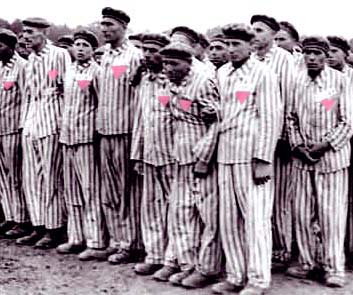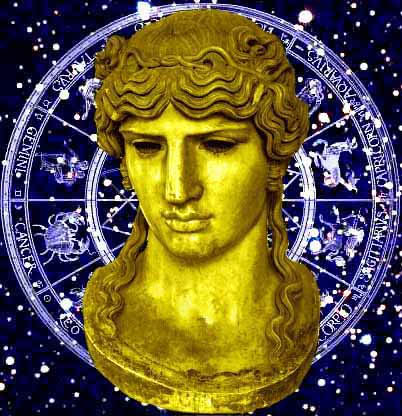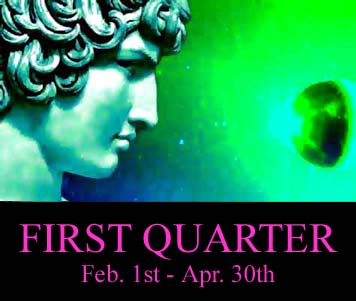
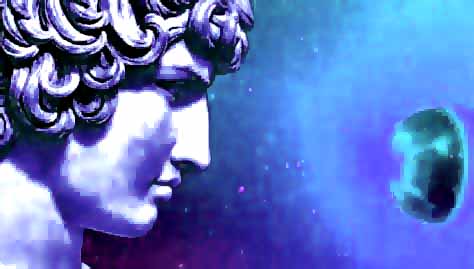
LITURGICAL CALENDAR
PART I
The New Year
October 30th - January 31st
OCTOBER
30- The Foundation of Antinoopolis
Our Lord Hadrian Augustus, Emperor of Rome, Pontifex Maximus, the New Jupiter, Hercules reborn, consecrated the shore of the Nile where Antinous fell, and solemnly founded the Holy City of Antinoopolis in Egypt in the year 130 CE. Antinous had risen again from the depths of Tartarus, he had conquered death and returned to the place of the living. By Victory and Proclamation, Antinous was elevated to godliness, and the ancient religion of Our God was set in motion. The Priesthood of Antinous was ordained, sacred statues and images proliferated, and Temples rose up in every corner of the world, for the glory of Antinous the God.We exalt in the deification of Antinous, and marvel at his assumption into heaven. On this day we concelebrate the Foundation of Antinoopolis by re-founding the sacred city within our hearts, declaring ourselves the New Stones of Antinoopolis. With love for Antinous in our hearts, the New Temple of Antinous was founded in 2002, called Ecclesia Antinoi, and the New Priesthood of Antinous initiated.
We recon the Foundation of Antinoopolis as the first day of the New and Holy Year of Ecclesia Antinoi.
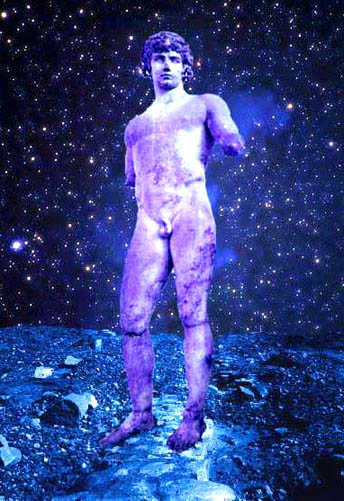
31- Antinous Liberator
The New God Antinous Liberator, sets us free with a wave of his hand. He destroys the bondage that holds our immortal spirit prisoner to the cycles of life and death, as the chains of time and matter fall of their own accord. In benediction, Antinous Liberator confers the flame of Homotheosis upon the hearts of his chosen lovers so that we may indulge and burn in the ecstasy of being One with HIM. We are free from the masquerade of the spirit in this world of illusion, we are unclothed before him. From his lips we drink the winged intoxication of the flesh and abandoned all reason and logic at his feet. Antinous stands upon the crescent of the Moon. He passes through the Arches of the spheres, the 7 Archons bow down before HIM. The god-power of Antinous shines over the face of darkness. The Spirits of the Dead awaken to dance as the wine of freedom flows down into the spider-heart of Tartarus. The festival of Antinous Liberator, the New Dionysus, is the place from which life comes and all love-joy with the ever-present specter of Our Lady death by it's side. On this day we surrender ourselves, body and soul, to the joy of Lord Liber, and join in the festival of Halloween, spreading the Love and Liberation of Antinous to the world of the living and the dead. This is the second day of the Ecclesiastic Year.

31- The Death of River Phoenix
In the early morning hours of Halloween day in 1993, River Phoenix died outside the Viper Room on Sunset Blvd. He had ingested a fatal combination of alcohol, marijuana, cold medicine, a component of speed, heroine and valium, he was 23 years old. His Dionysian indulgence caused him to collapse, convulse and then suffer cardiac arrest within a matter of moments. He was dead when he arrived at Cedar Sinai Hospital only some 45 minutes after taking his heroine. He was one of the most beautiful people that the world has ever known, an Adonis of our time, an amazing actor and musician, whose films will forever immortalize his memory. One of his last roles was as a gay, drug-addict, prostitute in My Own Private Idaho, and it is said that his work on this film had such a profound effect on his soul that he was never again free from it. He had not only turned to the use of heavy drugs, which he had before scorned, but he is also rumored to have taken up homosexuality, which he did not deny. Indeed the sensitivity and depth that he brought to the tortured prostitute, searching for love, is an intimation of the inner beauty and darkness of understanding that River Phoenix possessed. He had only just been chosen to play the role of the poet Arthur Rimbaud, another Saint of Antinous. For his achievements in the cinema, for the abandonment of letting the dark god take over his life, and for the sorrowful tragedy of his death, which he embraced fully, almost prophetically, we name the spirit of River Phoenix among the blessed Saints of Antinous, because he was a living Dionysus, and because his final day on earth was the day that the Holy City of Antinoopolis was founded. It is fitting that such a beautiful creature as St. River Phoenix is the first Saint of the Ecclesiastical Year.

NOVEMBER
1- Antinous Pantheon
When Hadrian fell in love with our god, he brought Antinous to Rome and cultivated the beautiful child into the flower of perfect manhood. It was during this time that the greatest building of Hadrian's reign was completed, the Pantheon, the magnificent domed Temple of All Gods. It was completed and consecrated in 126 AD, and Antinous was certainly present for the ceremony, he was the chosen favorite of Hadrian and attended Our Pontifex Maximus at the high altar of the only Roman Temple that has remained intact. On this day we celebrate the glory of the Pantheon, and its builder, and know in our hearts that the divine spirit of Antinous fills the great sacred space beneath the dome.When Hadrian commissioned the proliferation of images, he portrayed Antinous in the guise of many gods, all of them beautiful boys who died savage deaths for the benefit of mankind. In these boys we see the mystery of Homo Deus, the gay god, the beautiful one who is sacrificed because his seed does not fall within that chamber from which life comes. All these dying-boy-gods are Our God who we celebrate as Antinous Pantheon, the many-splendored god of beauty, Antinous who is All Gods, Antinous Uranus. We offer our reverence to the full pantheon of the gods, and to the Cosmos Our Mother, through Antinous Our Love and Our Lord.
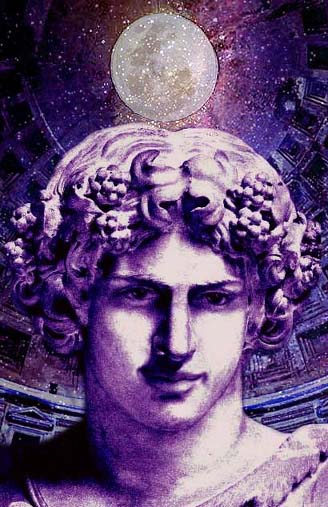
1- Beginning of the 72 Days, Peregrinatio III
Following the Sacred Nights of the Death and Liberation of Antinous the Justified, Our God, as Antinous Pantheon begins his ascent into the heavens to challenge the authority of the 72 Archons who guard the outer limit of the cosmos. The starry beings fall down upon their faces at his passing. This is the beginning of the period of seventy-two days, the time of solemnity and introspection. The meaning of the 72 Archons is individual, as they are inhibitors who prevent the soul from transpiring to the next era of existence. The dome of the sky moves 1 degree every 72 years, and very soon Our Age will come to a close and the New Age of Aquarius will begin. The 72 days is observed in preparation for the coming of the New Dawn, as the hand of Antinous Pantheon, the New Aquarius, turns the column of the stars
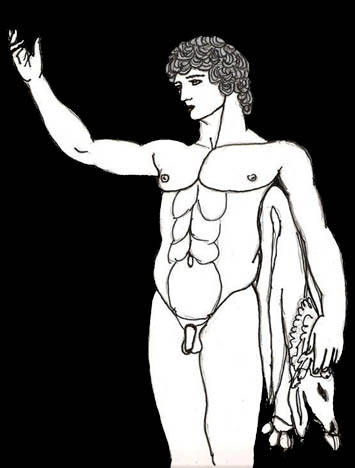
7- St. Tom of Finland
Touko Laaksonen was born in Kaarina Finland in 1920, he studied art in Helsinki and worked as a graphic artist during the forties and fifties?on the side he began to master his particular style and vision of male beauty. His entry into gay erotic art came in 1957 when he submitted drawings to the American bodybuilder magazine Physique Pictorial. It was at this early stage that he began use the name Tom of Finland. His art was an overt display of gay sexuality during the dark years of repression that preceded Stonewall. It is said that his images fueled the hearts of young, future gay rights advocates because of their defiant and utterly masculine depiction of the homosexual ideal. He was among the first to vividly display the fully engorged phallus, Priapic in its proportions, throwing off the censorship that had kept it hidden for hundreds of years. During the late sixties early seventies his erotic images were received with acclaim and became the subject of museum exhibitions, and they soon entered the heart of gay culture as one of the most widely recognized and often copied images of gay sexuality. His depictions of extremely masculine, homosexual vitality were a reflection of the deepest erotic fantasies of all gay men, elevating a new form of Priapism into an icon of homoeroticism. He met his lifetime partner Veli on a dark street corner in 1953, Veli died in 1981, Touko Laaksonen died in Helsinki on November 7th, 1991. For his work, for changing the face of the gay world with his prolific art, we recognize the sanctity of Tom of Finland and elevate him to the Sainthood of Antinous.
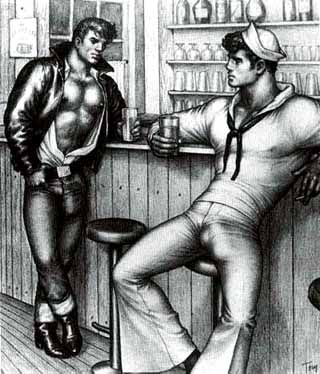
10- St. Arthur Rimbaud
On this day, in 1891, the poet Arthur Rimbaud died. He is known to have maintained a love affair with Paul Verlaine, and to have written openly about his bisexuality while still a teenager. He was seventeen years old when he wrote the poem, The Drunken Boat
"..Lighter than a cork, I danced on the waves which men call eternal rollers of victims, for ten nights, without once missing the foolish eye of the harbor lights! Sweeter than the flesh of sour apples to children, the green water penetrated my pinewood hull and washed me clean of the bluish wine-stains and the splashes of vomit, carrying away both rudder and anchor. And from that time on I bathed in the Poem of the Sea, star-infused and churned into milk, devouring the green azures; where, entranced and pallid, a dreaming drowned man sometimes goes down; where, suddenly dyeing the bluenesses- deliriums and slow rhythms under the gleams of the daylight, stronger than alcohol, vaster than music-ferment the bitter redness of love."
We dedicate this poem and the course of the free and disordered life of St. Arthur Rimbaud to the period of 72 Archons, and our difficult passage towards godliness.
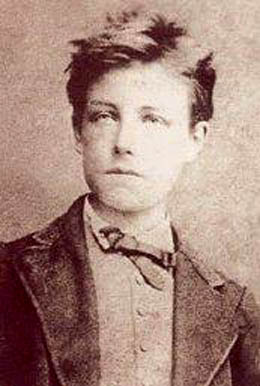
11- Niankhkhnum and Khnumhotep
In 1964 a damaged tomb was discovered that had once served as the burial place for two men who both shared the title "Overseer of the Manicurists in the Palace of the King." What sets this wonderful tomb apart from so many others is that it is filled with beautiful representations of the pair conducting their business and embracing one another with extraordinary tenderness and affection. Over the entrance to one chamber their names are mingled together forming the phrase "joined in life and joined in peace." Some Egyptologists prefer to view the closeness of Niankhkhnum and Khnumhotep as brotherly since they were both married and fathers of children, one of the many doorways is guarded by the son of Niankhkhnum on one side and the son of Khnumhotep on the other. No matter what their relationship, it is clear that the closeness of the two men included an integration of their families. But there are several portrayals of the pair that indicate a relationship far more intimate than mere brotherhood would suggest, and the inner most chamber, where their remains once lay in repose shows the two bound in what has been called the "Eternal Embrace" (shown here.) The Tomb of Niankhkhnum and Khnumhotep is one of the earliest and most vivid portrayals of homosexual love, crossing all boundaries, binding two men and two families for all time, and demonstrating the profound antiquity and sacredness of our form of love.
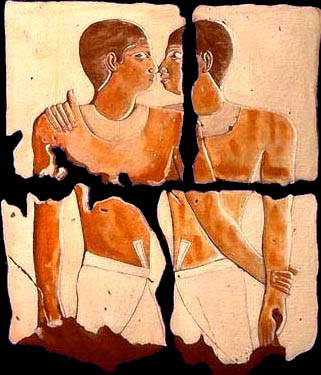
20- Antinous in Byblus (Per. An. II)
Adonis was the most perfect boy that the world has ever known; he was the object of the tremendous obsession of Venus, which led to his demise. Adonis was the son of Myrrha, who had seduced her own father Cinyras because of his god-like beauty. Out of shame, Myrrha was turned into the Myrrh tree whose precious tears of sap are the sweet fragrance offered to the gods. Cinyras, the father and grandfather of Adonis was the son of Pygmalion the sculptor who had fallen in love with his own self-created statue of Venus. The goddess took pity on the lovely-faced artist, brought the marble to life, and became the lover of Pygmalion and the mother of Cinyras. Venus is therefore, the grandmother and lover of Adonis all at once. Not unlike the statue of Pygmalion, Adonis was the self-created masterpiece of Venus, a rarified, distilled form of her own perfect, desirous beauty made flesh. He was born from the Myrrh tree when the sacred boar scrapped its tusks against the tender bark. Adonis is the issue and the essence of Myrrh fragrance. Venus found the child and put him in a box so no one could see his beauty. She took the box down to the underworld and placed it in the care of Persephone, but the goddess of the dead looked into the box and saw the beauty of Adonis and fell completely in love. She refused to return him to Venus and a crisis ensued between the goddesses, which is why Love and Death are jealous enemies. Jupiter intervened and decreed that Adonis would spend one-third of the year in the underworld, one-third with Venus, and one-third alone. But none of them were to have Adonis completely, because he distained their affections, and this would lead to his death on Mt. Lebanon near the ancient city of Byblus in Phoenicia and it was during the festival in which the women of Byblus commemorate the struggle between Venus and Persephone that Hadrian and Antinous arrived. The city of Byblus is said to be the oldest city in the world by Plutarch, it was the site where Isis found the box in which the imprisoned Osiris lay. A great tree had grown up around the box, engulfing it within its trunk. The box in which Venus hid Adonis, and the sarcophagus in which Set imprisoned Osiris are one and the same. The searching of Isis, Venus and Persephone for their beloved is the same as the lost sarcophagus of Antinous and our search for it, for the ultimate fate of his beautiful flesh, which is wholly lost. This is an allegory of the religion of Antinous.

20- The Colossoi of Memnon (Per. An. III)
After the death of Antinous, the Imperial entourage visited the ancient city of Thebes in the Upper Nile, it was the furthest south that Hadrian ever journeyed. The court visited the two Colosoi of Memnon, which are monumental seated statues of Amenhotep III built in the 18th dynasty. It was said that a ringing sound was emitted by the statues in the early mourning, and that anyone who heard the statues speak was favored by the gods, as the belief was that the statues were of Memnon, the son of Aurora. Hadrian did not hear the sound, but the empress Sabina did. The God of Thebes was Amon, the ram-headed, who was equated with Jupiter. Julia Balbilla, poetess and companion of Sabina, who was with the court throughout the voyage and was present at the Death and Liberation of Antinous, wrote these words. These are the first words written after the death of Antinous. They were inscribed, like graffiti on the Colossus of Memnon. "I, Balbilla, when the rock spoke, heard the voice of the divine Memnon or Phamenoth. I came here with the lovely Empress Sabina. The course of the sun was in its first hour, in the fifteenth year of Hadrian's reign, on the twenty-fourth day of the month Hathor. I wrote this on the twenty-fifth day of the month Hathor."
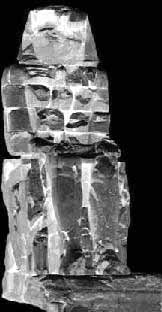
23- The Temple of Olympian Zeus (Per. An. I)
Construction of the great temple of Olympian Zeus in Athens was not complete when Hadrian arrived with Antinous and the glorious Imperial court, but the inner Cella was finished, and the gold and ivory statue of Zeus was ready for consecration. The Temple was a sign of the devotion that Hadrian had for the Athenian people, and the ancient Gods of Greece, and the magnificence of Our Father Zeus, whose representative on Earth Hadrian was. Consecration of this temple, which was presided over by Hadrian as Pontifex Maximus, with the elegance and divine presence of Antinous by his side, was a central event leading to the declaration of the Greeks that Hadrian was the living incarnation of Zeus. It was at this time that Hadrian began the unification of the Greek people with the formation of the Panhellenios, a league representing all the regions of Greece. From this moment forward, Hadrian was proclaimed, worshipped and honored as the living representative of Zeus throughout Greece and especially in Asia Minor, which was the birthplace and stronghold of the Imperial Cult. We honor Hadrian as Zeus, Our Father, and through him extend our adoration to Olympian Zeus, Jupiter Capitolinus, by whose strength the world was set in order.
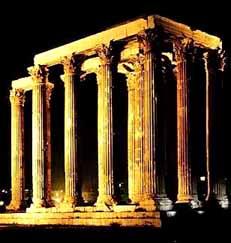
27- The Birth of Antinous
Antinous was born on this day in the year 111 CE in the Bithynian town of Claudiopolis, also known as Bithynion in Asia Minor during the reign of Trajan. This date is given by the Lanuvium tablet, an inscription made by a funerary society devoted to Antinous and Diana. The human birth of Antinous marks the beginning of the religion of Antinous the God, and is the joyous celebration of immortal beauty descending from heaven to dwell on Earth. The names of the parents of Antinous are unknown, but they are likened to the gods, Venus as mother and Hermes as father. His adopted mother was the Great Mother, whom we call Ceres-Sabina, and his father was the savior of the cosmos, whom we call Jupiter-Hadrian. We pray that Antinous shall live again in our hearts, and that he will make his face known to us, spread out across the face of the world, and that we too shall known the mystery and sublime splendor of sharing the earth with a living god. We celebrate the Birth of Antinous the Bithynian in faith and expectation that he lives even now and that he will come before us as the New Antinous Rejuvinated, within us and all around us.
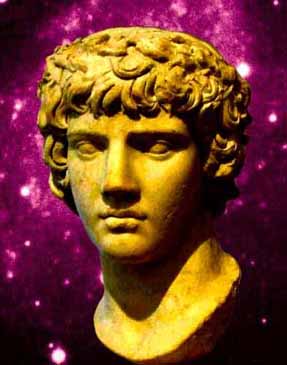
27- The Martyrdom of St. Harvey Milk
Champion of the early gay rights movement, in 1977 Harvey Milk became the first openly Gay person to be elected to the Board of Supervisors in San Francisco. He advocated the liberation of homosexuality for the benefit of society in general, and jokingly claimed to be a gay recruiter. He was instrumental in passing the Gay Civil Rights Bill in San Francisco, which was to be his undoing. On November 27, of 1978, Milk was murdered City Hall along with Mayor George Moscone by former City Supervisor Danny White who had resigned his office after the enactment of the bill. Danny White was sentenced to only seven years. Following his death on May 21st, 1979, riots broke during a demonstration in front of City Hall, and later, 100,000 people marched on Washington in support of Gay Rights chanting "Harvey Milk Lives!" He became the first gay saint and martyr following the movement that began at the Stone Wall. In a tape recording made one year before his assassination, as if in prophecy, Harvey Milk said, "If a bullet should enter my brain, let that bullet destroy every closet door." For his actions, for his life, for the changes that he effected, and for the love that continues to burn for him in the memory of his gay, lesbian and transgender children, we priests of Ecclesia Antinoi recognize and sanctify Harvey Milk as a Heroic Saint and Martyr.

DECEMBER
1- Nova Aquilae v1492
In 1999 on December 1st, a Super Nova was discovered in the constellation Aquila, visible with the naked eye. It was confirmation that the ancient celestial event criticized by Dio Cassius as a lie might indeed have occurred, prompting Hadrian to redraw the map of the constellations and include Antinous among the immortal heroes of antiquity. This new star named by astronomers Nova Aquilae v1492 was a sign of the return of Antinous in the modern age. It was a signal to begin the reconsecration of His sacred religion. The light of this new star passed over the face of the Earth, illuminating the hearts of all those who believe in him, effecting change and demonstrating those whose eyes were directed towards the heavens that the voice of Antinous was beckoning, and the time to revive his religion had finally come, after so many centuries of silence. With this sign from Antinous we are compelled, out of love to inflame ourselves for his sake and to spread the light of the New Star to the world. Pictured to the right is a magnified photograph of the New Star of Antinous.

2- The Marquis de Sade
Donatien Alphonse Francois de Sade was born June 2, 1740 in Paris, France. Throughout most of his life, the Marquis pursued bizarre forms of sexual gratification, he was arrested for his excesses numerous times and spent several periods of time imprisoned. While serving a sentence in the Bastille, he began to turn his extreme imagination towards writing books and plays, which are a summit of erotic poetry. It is from these works that the word Sadism is derived because the philosophy of sexual violence and domination was delineated and demonstrated for the first time by the Marquis in his numerous and detailed catalogues of perversions. One of these works, entitled The 120 Days of Sodom was written while in the Bastille. When the prison was stormed during the French Revolution, many of the works of the Marquis de Sade were lost, including this work. It was miraculously rediscovered, rolled up in the frame of a bed in 1904, and subsequently published. We consecrate the memory of the Marquis de Sade because he was a sexual revolutionary, who spoke quite openly about homosexuality, and freely acknowledge that his valet named Latour was his personal sodomizer, and he was among the first to take up the name of Antinous for beauty and homoerotic purposes, naming one of the characters in The 120 Days of Sodom Antinous, describing him in this way:"Antinous: so named because, like Hadrian's favorite, he had, together with the world's loveliest prick, its most voluptuous ass, and that is exceedingly rare. Antinous wielded a device measuring eight inches in circumference and twelve in length. He was thirty and had a face worthy of his other features."
The Marquis de Sade died December 2, 1814, in Charenton Insane Asylum
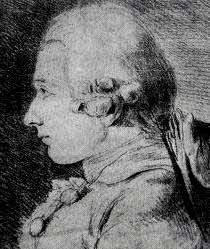
11- St. Cardinal Alessandro Albani
When he was twenty-nine, by special dispensation, Alessandro Albani was made a Cardinal, though he had never been a priest or member of a lower order. He is said to have cause great concern to his uncle Pope Clement XI, due to his wordly and undisciplined customs, first among these was his passion for art. Cardinal Albani used his vast wealth to collect classical art, and to patronize artists of his day, such as Anton Raphael Mengs, and the "father of Archaeology" Johann Joachim Winckelmann who was an open homosexual. The art collection of Cardinal Albani contained an extraordinary number of statues of Antinous, and these were studied by Winckelmann who had taken up residence in the Villa Albani outside of Rome. Albani died on December 11th in the year 1779. It is rumored that Cardinal Albani, Winckelman and Anton Mengs, were secret worshippers of Antinous and Priapus, and that they may have reinstated his religion in a private form, along with other, unnamed persons. For this reason, though based largely on rumor, Cardinal Alessandro Albani is sanctified as a Saint of Ecclesia Antinous. Though he was a Cardinal of the Catholic Faith, he may have been the first High Priest of Antinous since the extermination of the ancient religion 1300 years before. Though his secret cult is only rumor, it is the only known predecessor to the current Religion of Antinous which we call Ecclesia Antinoi.
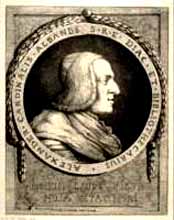
15- The Birth of Lucius Verus
Lucius Ceionius Aelius Aurelius Commodus Antoninus was the son of Lucius Aelius Caesar, His mother's name was Avidia. After the unexpected death of young Lucius's father, Lucius Aelius Caesar, Hadrian then adopted Antoninus Pius to be his successor, and ordered that Antoninus adopt Marcus Aurelius, Hadrian's seventeen year old nephew and the eight year old Lucius who took the name Lucius Verus. As a boy Lucius Verus was educated by the foremost Roman scholars including the historian Marcus Cornelius Fronto. He was watched over by a devoted freedman of his father named Nicomedes, a name with Bithynian connotations and of almost homosexual allusion. Originally Hadrian desired that Lucius should marry Faustina the younger, daughter of Antoninus, but then Antoninus canceled this arrangement and Faustina married Marcus Aurelius instead. Lucius married Lucilla, the daughter of Marcus Aurelius in 161 a year after becoming Emperor in 161. War broke out with the Parthians and Marcus Aurelius sent Lucius Verus to head the Campaign, but he is said to have spent his time drinking and banqueting, leaving the war in the capable hands of his generals. For this he was awarded a triumph. In general, the duties of running the government were left in the hands of Marcus Aurelius, while Lucius Verus spent his time with Actors and Musicians, and at the Chariot races. He is said to have excelled his eccentric father, Lucius Aelius, by exhibiting his pleasures on an Imperial scale, much to the disapproval of the stoic Marcus Aurelius. The two co-emperors however, always maintained cordial relations. Lucius Verus was born in the year 130, only 46 days after the Death of Antinous. This is of course very important to consider, and certainly must have left a life-long impression of Lucius Verus. Considerations of reincarnation are open for contemplation.
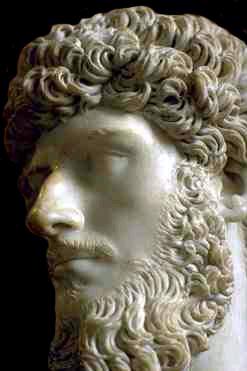
The Saturnalia
22- Sol Invictus
The return of the sun is the Conquest of Unconquered Light over chaos and darkness, the emergence of Phanes-Eros-Dionysus from the cosmic egg. On this day, we observe the moment when the unknown god Bythus-Narcissus gazed into the pool of the abyss and saw his own reflection. His image caused the birth of the thrice-great Phanes-Eros-Zagreus, the saviors, who together are called Antinous Invictus. The three-fold mystery of their birth is the descent of Phanes-Beauty, Eros-Love and Zagreus-Ecstasy into our world. These great spirits are the divine light of Antinous the God, it is their presence at the ground of our soul that is our immortal spark. Within us all is the perfect image of the perfect face of light and love, a reflection of Narcissus-Bythus gazing down into the darkness of our world.
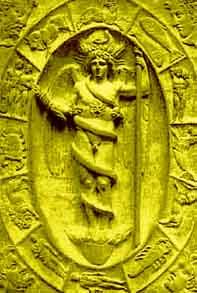
22- Antinous in Delphi (Per. An. I)
Hadrian and Antinous entered Delphi during the winter months when Dionysus was the supreme deity of the shrine. They solemnly advanced in procession up the sacred way, and entered the Temple of Apollo. The Oracle may not have been in consultation, and there is no evidence of Antinous or Hadrian receiving her words. Antinous was further instructed in the mysteries of Orpheus by his priests who were a religious order devoted to Dionysus, and limited to men. Having been initiated in Athens into the dark mysteries that Orpheus revealed of death and resurrection, he was here shown the high Orphic Secrets of Creation. The meaning of the egg of the dark bird of Night was infused into the deepening abyss the mystery of Antinous during this visit, and the full brilliance of Antinous Invictus was ignited as Phanes-Beauty, Eros-Love, and Zagreus-Ecstasy were awakened within him.

22- Antinous in Emesa (Per. An. II)
The city of Emesa in Syria was sacred to the God Elagabal, a sun deity and patron god of the later Emperor known as Elagabalus. The god of Emesa was Phoenician in origin, but had become somewhat Hellenized. Elagabalus the Emperor lived almost exactly one hundred years after Antinous, and died when he was 18 or 19 years old after being emperor only four years. He is considered to be one of the most perverted and cruel of all the Emperors, he is included as a saint of Ecclesia Antinoi because he was a homosexual of extreme proportions, and because he was the last Emperor to bear the name Antoninus. Antinous blessed and was blessed by the God Elagabal on this occasion, and it was from this consecration that the power of the later Emperor Elagabalus came forth. We consecrate ourselves to the Phallic Sun God Elagabal, in memory of the Last Antonine.

22- Hadrian in Colchis (Per. An. III)
Leaving Egypt behind, the entourage separated, with the majority returning to Rome, while Hadrian and his close circle continued into the Euxine Sea, known today as the Black Sea, going as far as the ancient city of Colchis in what is now called the Republic of Georgia. Colchis was the destination of Jason and the Argonauts who went in search of the Golden Fleece. Not far from Colchis is Mount Caucus, where legend has it that Prometheus had been bound for thirty thousand years before being set free by Hercules. This is the furthest East that Hadrian journeyed, and it is possible that he carried the mummified body of Antinous with him. Spiritually, in the process of deification and triumph over the 72 Archons, we observe that Antinous confronts the 52nd Archon, who is the ruler of the four elements. Antinous is on the verge of leaving our cosmos.
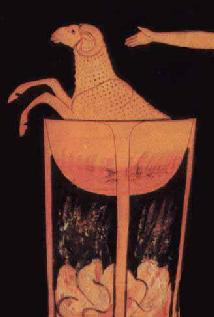
25- Saturn
In celebration of the return of Antinous Invictus, for the five days between December 25th and the 1st of January, we commemorate the Golden Age of the reign of Saturn. This is a time outside of time, and an occasion for joy and freedom from the world. The divine twins are born, Osiris and Isis, Set and Nephtys, Castor and Pollux, Freyr and Freya (for whom this time is also known as Yule.) We celebrate the Saturnalia with indulgence and as the festival of Liberty and total Freedom. There shall be no authority and no submission during this sacred period. There is to be no war, and no form of violence committed, only peace and harmony and the many joys of ecstasy are allowed. The rejoicing of the Saturnalia ends when the Prince of Flowers, Aelius Caesar, on January 1st
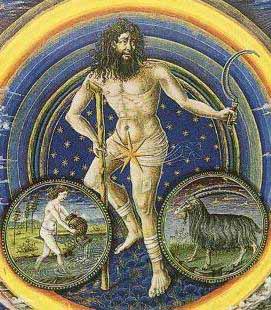
JANUARY
31- The Apotheosis of Aelius Caesar
Hadrian adopted Lucius Ceionius Commodus Verus, and called him Aelius Verus Caesar. It was said that beauty was his only recommendation. His poor health soon overtook him and Hadrian is reported to have said, "We have leaned against a tottering wall and have wasted the four hundred million sentences which we gave to the populace and the soldiers on the adoption of Commodus." He died on the Calends of January in the year 138, from an overdose of medicine given to help him make a speech to the Senate thanking Hadrian for the succession. Aelius Caesar is often called the Western Favorite, because of the possibility that he rivaled Antinous for Hadrian's love. We venerate Aelius Caesar as the fallen Prince of Flowers, the spiritual twin brother of Antinous whose death is the end of the Saturnalia.
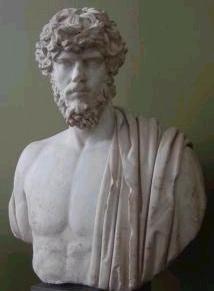
1- Janus
The God Janus, doubled-faced, observes the passage of the common year. The Prince of Flowers is dead, and the New God Antinous is rising. Ecclesia Antinoi recognizes the common calendar and uses the date as a reckoning that pertains only to our place in time and a space within the earthly sphere. We know that though our bodies are of Earth, our spirit is of the Heavens, and through the conquest of Antinous, over the 72 Archons, our spirit is set free. Father Janus opens the way for the passage of Antinous through the outer limit of the celestial sphere. Janus is the mouth of the serpent that bites its tail, and we observe that as the common year is born, so the liberation of Antinous from our cosmos nears completion, with only eleven heavenly spirits standing before him. This is the Holy day of The Gate, the tool of the priesthood of Ecclesia Antinoi. We wash our sacred stones and seek new auguries for the year.

The lesser Festival of Dionysus is celebrated when the wine has reached fermentation. Traditionally a secret ceremony limited to women, but opened to men during Roman times. It is the season in which Dionysus rules at Delphi and at Eleusis, though the full ceremonies of the Minor Bacchanalia were only performed once every two years. Mythologically this is the occasion when the Titans lure and capture the child Dionysus, charming him with a mirror and toys. The Titans murder him, rend his limbs from his body and eat his flesh. This is the first Wine festival and triumphal procession of the entourage of Dionysus whose arrival signals the Victory of Antinous over the forces of life and death as represented by the Archons.
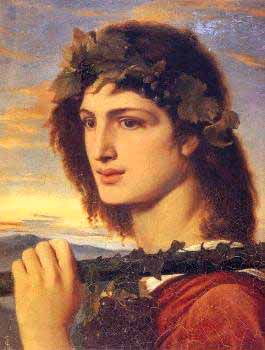
10- Burning of the Sodomites
The Heretics of the Middle Ages were the last defenders of the Gnosis, against the authority of the Catholic Church. Like the Gnostic Fathers before them, they advocated homosexuality as a sacred form of love. When the Order of Knights Templar was disbanded in 1310, the inquisitors discovered (under torture) that Heresy, Homosexuality and Devil Worship were interrelated. They represented a united Satanic assault on the power of the Church and the stability of Christian Civilization. Heresy infected the soul by undermining faith, Witchcraft bred hatred in the form of hexing, but Homosexuality was the vilest of the three because it infected Love, turning a man from his natural affection for a wife, and causing him to waste his seed in lecherous desire. The homosexual was a danger because he was a threat to the perpetuation of the family and of the human race. He fostered chaos, and weakened the already tenuous position of a society hemmed in by Islam, infected with Plague, and torn apart by War. The Bible warned that any city guilty of the crime of Sodomy would be destroyed by the fire of heaven, so the solution of the Church, in order to avert god's wrath, was to burn the Sodomites. The Gay Burning Times lasted six hundred years, seven hundred including the Nazis Holocaust (which was based on the same principles) a period of torture, murder and all out war against our kind, lasting much longer than Heresy and Witchcraft combined, which even continues to this day. The most intense period of burning was the 1600's through late 1700's in France and England, hundreds of thousands were burned at the stake. The word "Faggot" which means fire-log is said to have derived from the practice of piling the Sodomites upon the pyre, at the feet of the Heretics, because a Sodomite was not worthy to burn standing up. We who believe in Antinous, and in the sanctity of Homosexuality, solemnly remember the cruel death of the Sodomites who burned for us. Antinous was with them, he burned by their side. On this last of the of 72 days, Antinous the god, redeems the souls of all those who were burned, tortured, strangled, beheaded, or otherwise executed and condemned to Hell by the Church. That we may never forget the human sacrifice that was inflicted on our brothers and sisters, we consecrate the overthrow of the last Archon to the memory of the Heroic Sodomites who knowing that our form of Love was punishable by death, Loved as Homosexuals nevertheless, and almost willingly gave themselves to be Burned at the Stake. We pray that they will bless us with their fire in our own struggle for liberation.

11- Victoria Antinoi
Antinous in glory and radiance, stands between our cosmos and the abyss that is known as the Veil. He has returned as Antinous the Savior. This is the End of the sacred period of 72 days following the earthly mummification of the body of Antinous. The preservation of his perfect body was completed by the Egyptian priests, providing him with a carnal vessel for millions of years. This is the day upon which Antinous overcomes the 72 princes who rule over the cycles of life and death in the underworld and the outer limit of the cosmos, and our god becomes Antinous the Victorious. This is the Coming Forth by Day of Antinous. His triumph becomes the celestial procession, and together with the saints and blessed spirits of the immortals and divinized men, Antinous prepares to step away from the limit of the cosmos and enter the darkness of the void beyond.
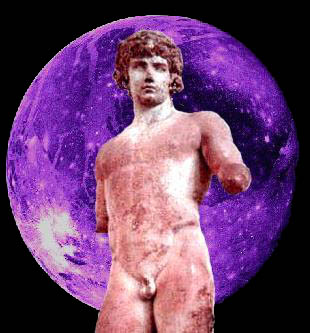
11- Juturnalia
Juturna, Goddess of fountains, lakes and rivers cleanses Antinous of his mortal remnants and prepares him for his journey of millions of years in one moment. In the ancient history of Rome, it is said that the divine twins Castor and Pollux, miraculously appeared in the Forum, watering their horses in the fountain of Juturna, announcing that the Romans were Victorious at the battle of Lake Regillus. Castor and Pollux, came to the side of Juturna and proclaimed the Freedom of the Romans from the tyranny of their Kings. We observe the coming of the twins as announcing of the Victory of Antinous over the 72 Archons of the high celestial sphere. His victory is our victory. We observe his ascent and departure from our reality by bathing in our own "fountains of Juturna" in preparation for the elevation of Antinous to the eternal Black Star.
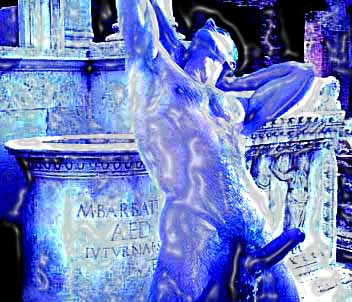
12- Antinous Navigator
Antinous the Transfigured steps away and The Boat of Millions of Years in One Moment, leaves the shore of the known cosmos, sailing out into the darkness of the abyss on its voyage to the Black Star, the way of the void, where the heaven of Antinous lies concealed beyond the veil of the cloud of unknowing, where he enters the fullness of the Place of Light, and restores the unity of the Aeons. This is the Via Negativa whereupon the soul-triumphant is lost in the open space of nonbeing, awaiting the Dark Bird of Night, the Thunderbird-Phoenix-Eagle that will elevate his heroic spirit to immortality. Only Antinous can guide the Boat of Millions of Years across this expanse of darkness. This journey, which ends as it begins, which arrives as it departs, is the eternal heaven which Antinous has accomplished for all those who are his chosen, who answer his call, and who believe in him.

12- Antinous in Thebes (Per. An. I)
In the first years of the tour of the east, Hadrian and Antinous visit the Greek city of Thebes, which is the sacred city of Dionysus, they are present for the Bacchanalia. This occasion is sacred as a commemoration of the death of Pentheus, and it is here that Antinous is initiated into the Mysteries of Dionysus. Thebes was the first city to which Dionysus brought his blessings in Greece. Only the wise and the foolish were able to comprehend and believe in his power, those who were level-headed rejected him and were driven mad and utterly destroyed. So it is with the religion of Anti-Nous, who is contrary to the Mind. The initiation into the mysteries of Dionysus, that Antinous received, was in preparation for his departure from the ordered sphere of our cosmos, into the chaos of the dark abyss. We must cast ourselves into the void where Antinous dwells by the side of Dionysus, the stranger-god.
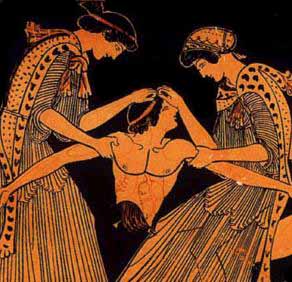
12- Antinous in Hieropolis (Per. An. II)
In Asia Minor, the court paid homage at the Temple of Astargis, a Hellenized form of Astarte-Venus. The Temple was famous for its sacred prostitutes, the hierodules, who were priestesses of the love goddess that served as sexual vessels for the adoration of the men. Because of his devotion to the Goddess Venus, Hadrian would have visited the Temple that was the center of a large, wide-spread cult. There were also present, homosexual sacred-prostitutes, who likewise served the sacred function. The connection between their office and the function of Antinous as the lover of Hadrian may have facilitated his initiation into their cult. We honor the ancient cult of Astargis out of love for Antinous, and seek to embrace and understand the function of the hierodules.
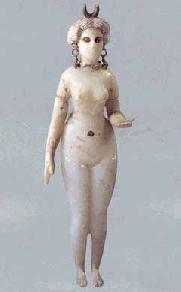
13- The Birth of Aelius Caesar
Lucius Ceionius Commodus Verus was born on January 13th, 101, most likely in Rome. He was from an old wealthy Etruscan family. His grandfather, after whom he had been named, had been a Consul and his father a Senator. Lucius Ceionius was beautiful and elegant, well educated, and was given over to a life of pleasure and voluptuousness. He was a teenager when Hadrian came to power in 117, and his flamboyant and attractive character was a compliment to his physical beauty that soon gained the attention of the new Emperor. It is believed that Hadrian and Lucius were lovers during the early years of Hadrian's reign, perhaps for the period of six years prior to Antinous. When Hadrian met Antinous in the year 123, Lucius was 22 years old, and in keeping with the Greek philosophy of pederastic love, it is very likely that their love affair had transformed into what would become a life-long friendship between the Emperor and his now matured Lucius. Antinous entered Hadrian's heart just as Lucius was moving on to his responsibilities as a patrician citizen of Rome. While Hadrian was courting the young Antinous, Lucius married Domitia Lucilla and had three children by her, one of which was the later Emperor known as Lucius Verus who is often confused with his father. After the Death of Antinous, as Hadrian began to grow ill, his attention turned again to his still beloved Lucius, and on August 10, 136, Hadrian surprised the world by adopting Lucius and declaring him to be his successor. Suspicions abounded, as the eccentric and delicate character of Lucius hardly seemed appropriate to rule the Empire after such a man as Hadrian, but there must have been more to Lucius than history has preserved. He assumed the name Aelius Caesar, and was sent to govern Pannonia along the Danube, but became ill and returned to Rome in the winter of 137, where he died on January first. He is remembered and adored as a god, as the brother of Antinous, the twin and second love of Hadrian, who we call the Prince of Flowers.
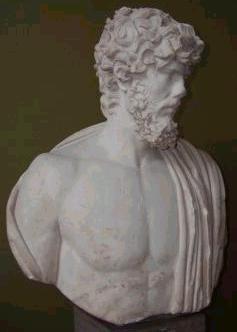
20- St. Sebastian
Sebastian was an officer in the Imperial Guard of Emperor Diocletian, and he was a Christian. In 302 A.D. Diocletian subjected the Christians to a brutal persecution, and it was during this period that Sabastian was denounced to the Emperor. When asked to sacrifice before a pagan altar, Sebastian refused and was sentenced to death. He was tied to a column before Mauritanian archers who shot him with arrows...but to no effect. Sebastian was strengthened by his faith, and did not die. He was finally clubbed to death in front of Emperor. Homosexuals have for centuries looked to Sebastian as a patron saint, his manner of death which is like an affliction of Eros, and the sight of the beautiful young soldier, plumed with arrows, has moved our heart more than all other saints. In the Middle Ages, He was said to have power over the plague and during the Black Death, his cult of grew among the penitent flagellants. His image was a favorite subject of homosexual artists during the Renaissance who were fascinated by the erotic charge of his death. During the early nineteenth century he was taken up as the model for homosexual suffering and persecution. Some writers even claiming that he was the young lover of Diocletian and that his martyrdom had a jealous, sexual subtext. In our time, the power of St. Sebastian over the Plague has made him a spiritual force in the fight against AIDS. And so We recognize the sanctity of St. Sebastian as the patron saint of homosexuals and as a protector from our modern plague. We consecrate him to the Religion of Antinous and offer our own quivering-hearts as a target for his thousand arrows of love.
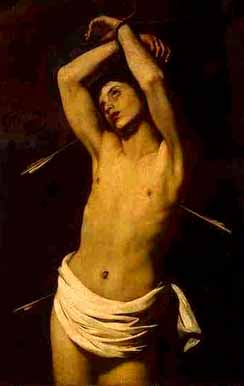
22- The Assumption of Ganymede
Our Father Jupiter, descended upon the slopes of Mt. Ida in the form of an eagle and carried away Ganymede, the beautiful young prince of Troy, ravaging him, and elevating him to live among the immortals. At the table of the Olympian gods, Jupiter installed his Ganymede as the divine cupbearer who pours out nectar-wine from the cup of eternal life. This love affair between the Phrygian prince and the Father of the Gods is a divine parallel of the love between Antinous and Hadrian. Ganymede is the emblem of the coming Age of Aquarius, when peace and love will rule the hearts of all men. On this day, the beginning of the sign of Aquarius, we observe the deification of Antinous as having made union with the Thunderbird-Phoenix-Eagle, and having been elevated to reign among the immortals in the manner of Ganymede. And we pray for the hastening of the coming age.
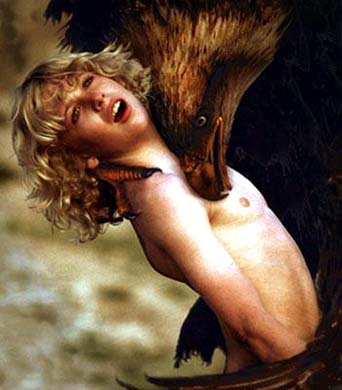
24- The Birth of Hadrian
Publius Aelius Hadrianus was born on this day either in Italica, Spain or in Rome, in the year 76. His father was Publius Aelius Afer, his mother was Domitia Paulina. His uncle was the Emperor Trajan who had been adopted by Nerva. Trajan employed Hadrian as a general in his conquests across the Danube, where Hadrian proved his military prowess, and gained the love and devotion of the Legions. It is said that the relationship between Hadrian and his uncle was strained, and they are even known to have quarreled over beautiful boys, but Hadrian was very close to the Emperess, Plotina, whose intellectual depth he preferred to the military harshness of Trajan. During the unsuccessful campaign against the Parthians, in modern day Iraq, Trajan suddenly fell ill and died. Plotina is said to have insured that Hadrian be his successor, allegedly even forging the documents of adoption. The New Emperor Hadrian inherited the largest Empire that the world had ever known, the borders of Rome had reached their greatest extent. Hadrian is the Father of the Antonines, the bringer of the Golden age of Rome, he put an end military expansion of the Empire and turned instead to improving the interior. He is the prime deity of the imperial cult as recognized by Ecclesia Antinoi. He is the representative of Zeus on Earth, emblem of the ruler of the cosmos, the great eagle, Hadrian is the leader of the Archons, the bringer of order out of chaos, founder of our religion, he is the divine lover of Antinous, our model and god.
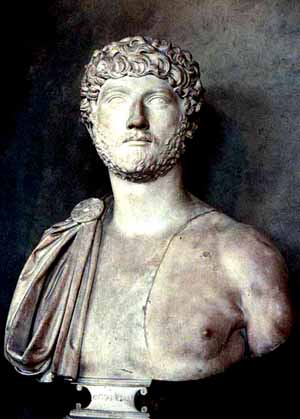
28- The Gay Holocaust
In Nazi Germany, on January 28th, 1935, the Ministry of Justice revived and amended "Paragraph 175", the old Prussian statute created in 1871 that made Homosexuality a crime punishable by imprisonment. The law was increased in severity and became the legal basis for the systematic persecution of male Homosexuals. The Nazis believed that homosexuality endangered to the purity of the German people, that gay men corrupted the youth, preventing them from living normal married lives, and were therefore a threat to the race. Homosexuality was denounced as an unnatural lust, and accused of being intrinsically Un-German, a disease imported by Jews and supported by Communists, the enemy of the Aryan People. Imprisonment and sterilization were the initial penalties, but Heinrich Himmler revealed his true design when he said that the "extermination of degenerates" was in keeping with ancient Nordic principles (an interesting idea considering that many of the Dying-Boy-Gods, to whom we compare Antinous, were killed as ritual human sacrifices.) Men were arrested and sent to the concentration camps by the tens of thousands. They were distinguished by the sign of the pink triangle, and subjected to extreme conditions of abuse. The Men of the Pink Triangle were beaten regularly, subjected to hard labor, deprived of food and exposed to the elements. They were abused by the Nazi guards and by other prisoners alike because everyone considered homosexuality the lowest of low, a sin and an aberration, even the homosexuals themselves. An estimated 60,000 men were legally sentenced under "Paragraph 175," nearly all of them died, and this number only includes those documented in Germany. The number of unrecorded homosexuals, and those outside of German is impossible to know, but may be twice as many. The Men of the Pink Triangle were so successfully persecuted that even after the Nazi defeat, Paragraph 175 remained law, and many gay inmates were sent to regular prison to complete their sentences. It was not until 1969 that the law was finally repealed. We sorrowfully remember the legions of Men of the Pink Triangle who died cruel and vicisous deaths under the Nazis. We remember the evil that was perpetrated with the blessing of "Paragraph 175." These men are our Martyrs, our Holocaust, our Guardian Saints, they suffered so that we would be Free. We will never forget their painful and miserable deaths, and we pray to Antinous the God of Homosexuality, to watch over their immortal souls and give them rest. On this day we remember the horrors that were raised against us through the Amendment of "Paragraph 175."
